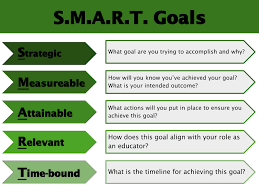Top 10 Memory-Boosting Techniques for Students
Developing a strong memory is essential for academic success. Whether you’re studying for a big exam or trying to retain concepts from class lectures, your ability to remember information can significantly impact your performance. Fortunately, there are proven techniques to enhance memory and make learning more effective. Here are the top 10 memory-boosting techniques every student should try.
1. Active Recall
Active recall is one of the most powerful techniques for boosting memory. Instead of passively rereading notes, test yourself by trying to remember key concepts without looking at the material. This strengthens neural connections and improves long-term retention.
How to apply: After studying a topic, close your book and try to write down or say everything you remember. Then go back and check what you missed.
2. Spaced Repetition
Spaced repetition involves reviewing information at increasing intervals over time. It’s a scientifically-backed method that helps move knowledge from short-term to long-term memory.
How to apply: Use tools like Anki or Quizlet that are designed for spaced repetition, or make your own revision schedule, revisiting topics after 1 day, 3 days, 1 week, and so on.
3. Mind Mapping
Mind maps help organize information visually, making it easier for the brain to remember. They show relationships between ideas and turn complex concepts into a more understandable format.
How to apply: Use a sheet of paper or a digital tool to create a mind map. Start with the main topic in the center, then branch out into subtopics using keywords and images.
4. Mnemonics
Mnemonics are memory aids that help you recall information through patterns, acronyms, or rhymes. They are especially useful for memorizing lists, formulas, or sequences.
Example: To remember the colors of the rainbow – ROYGBIV (Red, Orange, Yellow, Green, Blue, Indigo, Violet).
5. Visualization
Visualization involves creating mental images to remember information more effectively. The brain often retains images better than words, especially when the images are vivid or unusual.
How to apply: When studying, try to picture what you’re learning. For example, visualize the process of photosynthesis as a real-life scene in nature.
6. Chunking
Chunking means breaking large pieces of information into smaller, more manageable parts. It makes memorization easier and is commonly used for memorizing numbers or vocabulary.
Example: Instead of remembering 196820032022, break it into 1968 – 2003 – 2022.
7. Teach What You Learn
Teaching a concept to someone else forces you to recall and explain it clearly, which strengthens your understanding and memory.
How to apply: Teach your sibling, friend, or even an imaginary audience. If you can teach it, you truly understand it.
8. Use of Flashcards
Flashcards are a classic and effective study tool that promotes active recall. You can quiz yourself on definitions, dates, formulas, and more.
Tip: Shuffle the cards regularly to avoid memorizing based on order.
9. Proper Sleep and Rest
Your brain processes and consolidates memories while you sleep. A lack of rest can reduce focus, comprehension, and retention.
Advice: Aim for 7–9 hours of quality sleep, especially after study sessions or before exams.
10. Stay Physically and Mentally Active
Exercise increases blood flow to the brain and supports memory function. Likewise, staying mentally active with brain games, puzzles, and reading also boosts memory.
How to apply: Incorporate daily physical activity into your routine and challenge your brain with logical tasks like Sudoku or chess.
Conclusion
Improving your memory isn’t about working harder—it’s about working smarter. By applying these memory-boosting techniques consistently, students can enhance their learning experience, retain information longer, and perform better academically. Whether you’re preparing for exams or trying to understand complex topics, these strategies can help unlock your brain’s full potential.


